#king gustav iv of sweden
Explore tagged Tumblr posts
Text


King Erik XIV's Regalia / The Crown of the Swedish Sovereign
King Erik XIV's Crown from 1561 is the crown of the Swedish sovereign. It was made in Stockholm by Flemish goldsmith Cornelis ver Weiden. The crown consists of 23-carat gold and is set with pearls, emeralds, diamonds, and rubies.
King Erik XIV's Crown is the oldest crown in the world, still used as a royal crown. Around the crown ring are small figures of women symbolising the cardinal virtues: Justice, courage, prudence, temperance, faith, hope, compassion and patience.
King Erik XIV's Orb is also made by Flemish goldsmith Cornelis ver Weiden; it's made out of gold and set with pearls and was made for King Erik XIV's coronation in 1561. All orbs can be traced back to the globes used by the Roman emperors to demonstrate their global dominance. When King Erik XIV was to marry Karin Måndotter in 1568, he decorated his orb with an engraved world map. The map shows oceans, ships and sea monsters.
King Erik XIV's Sceptre, made in 1561 by Hans Heidenrik, is made from gold and decorated with rubies, diamonds, sapphires and pearls. It was used at King Erik XIV's coronation and has been used by all Swedish monarchs since then. A large sapphire disappeared from the sceptre at the christening of Crown Prince Gustav (who later became Gustav IV Adolf).
King Erik XIV's Key of the Realm, made in 1561 by Peter Holtswijller out of gold-plated silver, symbolises the king's power to shut out evil, keep good, and admit those in distress.
Photos: The Royal Court of Sweden
#swedish royal family#king carl xvi gustaf#king erik xiv#swedish crowns#swedish history#coronation#crown jewels#my upload
32 notes
·
View notes
Text
The Top 40 Most Popular Operas, Part 3 (#21 through #30)
A quick guide for newcomers to the genre, with links to online video recordings of complete performances, with English subtitles whenever possible.
Verdi's Il Trovatore
The second of Verdi's three great "middle period" tragedies (the other two being Rigoletto and La Traviata): a grand melodrama filled with famous melodies.
Studio film, 1957 (Mario del Monaco, Leyla Gencer, Ettore Bastianini, Fedora Barbieri; conducted by Fernando Previtali) (no subtitles; read the libretto in English translation here)
Donizetti's Lucia di Lammermoor
The most famous tragic opera in the bel canto style, based on Sir Walter Scott's novel The Bride of Lammermoor, and featuring opera's most famous "mad scene."
Studio film, 1971 (Anna Moffo, Lajos Kozma, Giulio Fioravanti, Paolo Washington; conducted by Carlo Felice Cillario)
Leoncavallo's Pagliacci
The most famous example of verismo opera: brutal Italian realism from the turn of the 20th century. Jealousy, adultery, and violence among a troupe of traveling clowns.
Feature film, 1983 (Plácido Domingo, Teresa Stratas, Juan Pons, Alberto Rinaldi; conducted by Georges Prêtre)
Part I, Part II, Part III, Part IV, Part V, Part VI
Mozart's Die Entführung aus dem Serail (The Abduction from the Seraglio)
Mozart's comic Singspiel (German opera with spoken dialogue) set amid a Turkish harem. What it lacks in political correctness it makes up for in outstanding music.
Royal Opera House, Covent Garden, 1988 (Deon van der Walt, Inga Nielsen, Lillian Watson, Lars Magnusson, Kurt Moll, Oliver Tobias; conducted by Georg Solti) (click CC for subtitles)
Verdi's Un Ballo in Maschera
A Verdi tragedy of forbidden love and political intrigue, inspired by the assassination of King Gustav III of Sweden.
Leipzig Opera House, 2006 (Massimiliano Pisapia, Chiara Taigi, Franco Vassallo, Annamaria Chiuri, Eun Yee You; conducted by Riccardo Chailly) (click CC for subtitles)
Part I, Part II
Offenbach's Les Contes d'Hoffmann (The Tales of Hoffmann)
A half-comic, half-tragic fantasy opera based on the writings of E.T.A. Hoffmann, in which the author becomes the protagonist of his own stories of ill-fated love.
Opéra de Monte-Carlo, 2018 (Juan Diego Flórez, Olga Peretyatko, Nicolas Courjal, Sophie Marilley; conducted by Jacques Lacombe) (click CC and choose English in "Auto-translate" under "Settings" for subtitles)
Wagner's Der Fliegende Holländer (The Flying Dutchman)
An early and particularly accessible work of Wagner, based on the legend of a phantom ship doomed to sail the seas until its captain finds a faithful bride.
Savolinna Opera, 1989 (Franz Grundheber, Hildegard Behrens, Ramiro Sirkiä, Matti Salminen; conducted by Leif Segerstam) (click CC for subtitles)
Mascagni's Cavalleria Rusticana
A one-act drama of adultery and scorned love among Sicilian peasants, second only to Pagliacci (with which it's often paired in a double bill) as the most famous verismo opera.
St. Petersburg Opera, 2012 (Fyodor Ataskevich, Iréne Theorin, Nikolay Kopylov, Ekaterina Egorova, Nina Romanova; conducted by Mikhail Tatarnikov)
Verdi's Falstaff
Verdi's final opera, a "mighty burst of laughter" based on Shakespeare's comedy The Merry Wives of Windsor.
Studio film, 1979 (Gabriel Bacquier, Karan Armstrong, Richard Stilwell, Marta Szirmay, Jutta Renate Ihloff, Max René Cosotti; conducted by Georg Solti) (click CC for subtitles)
Verdi's Otello (Othello)
Verdi's second-to-last great Shakespearean opera, based on the tragedy of the Moor of Venice.
Teatro alla Scala, 2001 (Plácido Domingo, Leo Nucci, Barbara Frittoli; conducted by Riccardo Muti)
#opera#top 40#21 through 30#video#complete performances#english subtitles#il trovatore#lucia di lammermoor#pagliacci#die entfuhrung aus dem serail#the abduction from the seraglio#un ballo in maschera#les contes d'hoffmann#the tales of hoffmann#der fliegende holländer#the flying dutchman#cavalleria rusticana#falstaff#otello
26 notes
·
View notes
Text

King Gustav Adolf IV of Sweden. By Jonas Forslund.
#jonas forslund#kingdom of sweden#house of holstein gottorp#Konungariket Sverige#Holstein-Gottorpska ätten#kumg av sverige
3 notes
·
View notes
Text
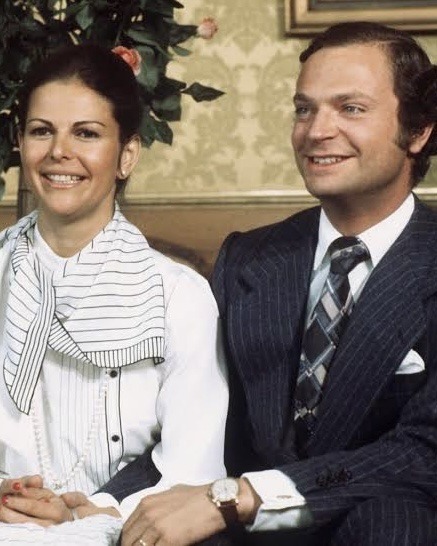
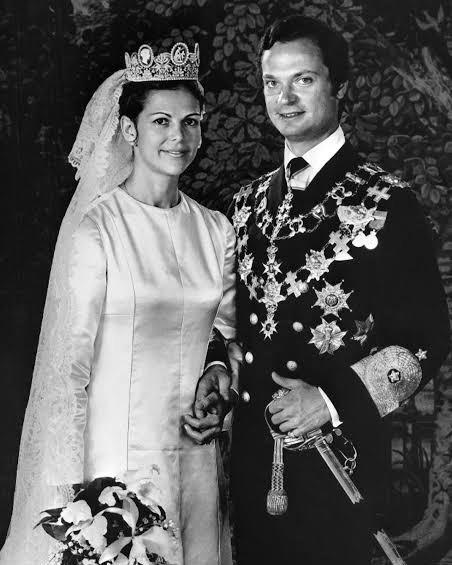
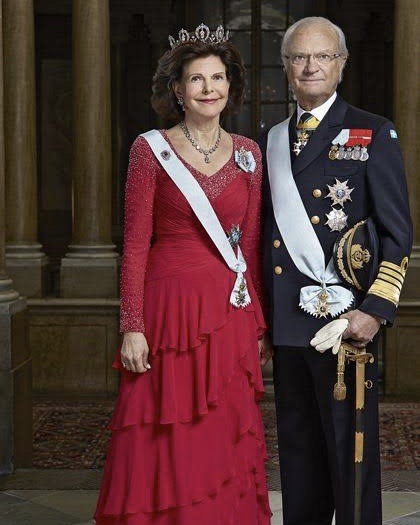
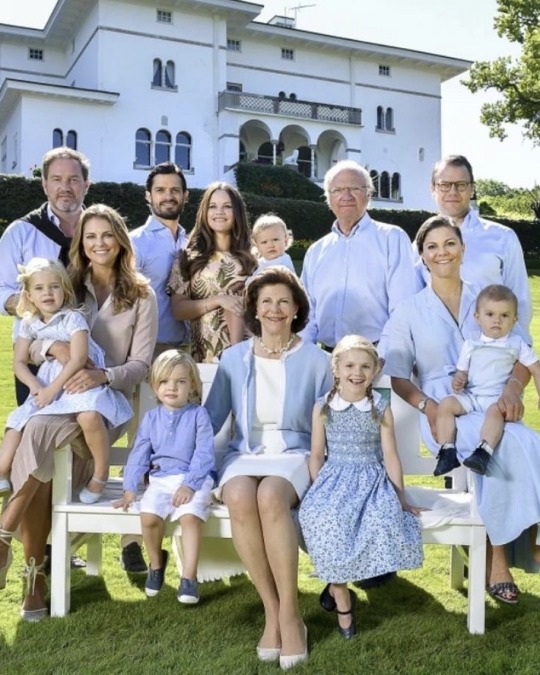
Happy 47th wedding anniversary to King Carl XVI Gustaf and Queen Silvia of Sweden!
The couple tied the knot on June 19 1976 at the Stockholm Cathedral, having met 4 years prior at the 1972 Summer Olympics in Munich; Silvia was assigned to be Carl Gustaf's translator during the games. Carl Gustaf acceded to the throne in the following year following the death of his grandfather.
Their engagement was announced on March 12 1976; the King proposed with a 2-carat ring that belonged to his late mother. Their wedding symbolized the first marriage of a reigning Swedish monarch since King Gustav IV Adolf married Princess Frederica of Baden in 1797; and Silvia became Sweden's first queen consort since 1965.
Their chosen date of June 19 is a symbolic date for the Bernadotte family and one in which multiple family members have gotten married on, including Carl Gustaf and Sofia's eldest daughter, Crown Princess Victoria.
They have three children and eight grandchildren: Crown Princess Victoria, Duchess of Västergötland (45), mother of Princess Estelle (11) and Prince Oscar (7); Prince Carl Philip, Duke of Värmland (44), father of Prince Alexander (7), Prince Gabriel (5) and Prince Julian (2); and Princess Madeleine, Duchess of Hälsingland and Gästrikland, (41), mother of Princess Leonore (9), Prince Nicolas (8) and Princess Adrienne (5).
30 notes
·
View notes
Text









Royal Deaths, 29 September
855 - Lothair I, Emperor of the Romans.
1360 - Joan I, Countess of Auvergne, Queen of France.
1364 - Charles the ‘Saint’, Duke of Brittany, killed in the Battle of Auray at 44 or 45.
1560 - Gustav Vasa I, King of Sweden who abolished Sweden's elective monarchy, dies at 64.
1833- Ferdinand VII, King of Spain who lost nearly all of Spain's territories in Latin America, dies at 48.
1834 - Friedrich, Duke of Saxe-Altenburg.
1882 - Princess Maria Pia of Bourbon-Two Sicilies, Duchess of Parma, first wife of Roberto I, Duke of Parma, in childbirth aged 33.
1898 - Queen Louise of Denmark, born of Hesse-Kassel, wife of King Christian IX of Denmark.
2020 - Sabah IV bin Ahmad Al-Jaber Al-Sabah, Emir of Kuwait.
5 notes
·
View notes
Text
Bbc Ghosts characters as Kings of Sweden
Basement gang: Magnus IV Ericson

Humphrey: John III

Mary: Gustavus Adolphus

Kitty: Gustav III

Thomas: Charles XIV John (Jean Bernadotte)

Fanny and the Captain: Gustaf V

Pat, Julian, Mike and Alison: Carl XVI Gustaf

17 notes
·
View notes
Text

Since I very lack Knowledge about royal thing, I do little research about why Trystan's middle name change and I found some interesting about regnal name in Wikipedia. full article in here
REGNAL NAME
A regnal name, or regnant name or reign name, is the name used by monarchs and popes during their reigns and, subsequently, historically. Since ancient times, some monarchs have chosen to use a different name from their original name when they accede to the monarchy.
The regnal name is usually followed by a regnal number, written as a Roman numeral, to differentiate that monarch from others who have used the same name while ruling the same realm. In some cases, the monarch has more than one regnal name, but the regnal number is based on only one of those names, for example Charles X Gustav of Sweden. If a monarch reigns in more than one realm, they may carry different ordinals in each one, as some realms may have had different numbers of rulers of the same regnal name. For example, the same person was both King James VI of Scotland and King James I of England.
The ordinal is not normally used for the first ruler of the name, but is used in historical references once the name is used again. Thus, Queen Elizabeth I of England was called simply "Elizabeth of England" until the accession of Queen Elizabeth II almost four centuries later in 1952; subsequent historical references to the earlier queen retroactively refer to her as Elizabeth I. However, Tsar Paul I of Russia, King Umberto I of Italy, King Juan Carlos I of Spain, Emperor Haile Selassie I of Ethiopia and Pope John Paul I all used the ordinal I (first) during their reigns. In spoken English, such names are pronounced as "Elizabeth the First", "George the Sixth", etc.
In some countries in Asia, monarchs took or take era names. While era names as such are not used in many monarchies, sometimes eras are named after a monarch (usually long-lived), or a succession of monarchs of the same name. This is customary; there is no formal or general rule. For example, the whole period during which a succession of four Georges (George I, II, III, and IV) of the Hanoverian dynasty reigned in Great Britain became known as the Georgian era. Conversely, although there were many Edwards, the Edwardian era always refers to the reign of Edward VII at the beginning of the 20th century.
#playchoices#choices stories you play#choicesgame#choices game#choicesstoriesyouplay#play choices#crimes of passion#trystan thorne
5 notes
·
View notes
Photo

Read the history day by day and soon you realise that humanity always was in such a deep mess... There also are patterns repeating, loops, making every day a bit of a groundhog day. Today was a lucky days for kings. Yohannes IV crowned Emperor of Ethiopia, Kwang-su becomes Emperor of China, Basilicus becomes Bysantine Emperor, Stalin starts calling himself "Man of Steel", Gustav I crowned king of Sweden and Bayinnaung is crowned king of Burma. And it is Yennayer, New Year in many regions of North Africa, celebration of the Berber king Shoshenq I being enthroned Pharaoh of Egypt. With the latest I like the tradition of sending children to the farms to pick themselves fruit and vegetables, I guess for the prosperity of the new agricultural year. Children, and later farmers may do good things and nasty things but the impact is small compared to actions of kings. Why someone is born to be a king? Would it be better if no-one ever had much power over others? What about the power to accomplish good deeds? #king #pharaoh #children #calendar #yennayear #linandara #Egypt #Egyptian #history #curiosities #innerwork #digitalart #layersofexistence #feeltheforce #thoughts #mystery #illustration #papyrus #manuscript #mythology #today #symbolism #nft #ai #AI #aiart #January #livingmeaningfully #folklore #adventurethatislife https://www.instagram.com/p/CnUxN7LNaya/?igshid=NGJjMDIxMWI=
#king#pharaoh#children#calendar#yennayear#linandara#egypt#egyptian#history#curiosities#innerwork#digitalart#layersofexistence#feeltheforce#thoughts#mystery#illustration#papyrus#manuscript#mythology#today#symbolism#nft#ai#aiart#january#livingmeaningfully#folklore#adventurethatislife
3 notes
·
View notes
Text
Events 9.8 (before 1860)
70 – After the capture of Herod's Palace the previous day, a Roman army under Titus secures and plunders the city of Jerusalem. 617 – Battle of Huoyi: Li Yuan defeats a Sui dynasty army, opening the path to his capture of the imperial capital Chang'an and the eventual establishment of the Tang dynasty. 1100 – Election of Antipope Theodoric. 1198 – Philip of Swabia, Prince of Hohenstaufen, is crowned King of Germany (King of the Romans) 1253 – Pope Innocent IV canonises Stanislaus of Szczepanów, killed by King Bolesław II. 1264 – The Statute of Kalisz, guaranteeing Jews safety and personal liberties and giving battei din jurisdiction over Jewish matters, is promulgated by Bolesław the Pious, Duke of Greater Poland. 1276 – Pope John XXI is elected Pope. 1331 – Stefan Dušan declares himself king of Serbia. 1334 – The Battle of Adramyttion begins in which a Christian naval league defeats a Turkish fleet in several encounters. 1380 – Battle of Kulikovo: Russian forces defeat a mixed army of Tatars and Mongols, stopping their advance. 1504 – Michelangelo's David is unveiled in Piazza della Signoria in Florence. 1514 – Battle of Orsha: In one of the biggest battles of the century, Lithuanians and Poles defeat the Russian army. 1522 – Magellan–Elcano circumnavigation: Victoria arrives at Seville, completing the first circumnavigation. 1565 – St. Augustine, Florida is founded by Spanish admiral and Florida's first governor, Pedro Menéndez de Avilés. 1655 – Warsaw falls without resistance to a small force under the command of Charles X Gustav of Sweden during The Deluge, making it the first time the city is captured by a foreign army. 1727 – A barn fire during a puppet show in the village of Burwell in Cambridgeshire, England kills 78 people, many of whom are children. 1755 – French and Indian War: Battle of Lake George. 1756 – French and Indian War: Kittanning Expedition. 1760 – French and Indian War: French surrender Montreal to the British, completing the latter's conquest of New France. 1761 – Marriage of King George III of the United Kingdom to Duchess Charlotte of Mecklenburg-Strelitz. 1775 – The unsuccessful Rising of the Priests in Malta. 1781 – American Revolutionary War: The Battle of Eutaw Springs in South Carolina, the war's last significant battle in the Southern theater, ends in a narrow British tactical victory. 1793 – French Revolutionary Wars: Battle of Hondschoote. 1796 – French Revolutionary Wars: Battle of Bassano: French forces defeat Austrian troops at Bassano del Grappa. 1810 – The Tonquin sets sail from New York Harbor with 33 employees of John Jacob Astor's newly created Pacific Fur Company on board. 1813 – At the final stage of the Peninsular War, British-Portuguese troops capture the town of Donostia (now San Sebastián), resulting in a rampage and eventual destruction of the town. 1819 – 1819 Balloon riot occurred at Vauxhall Garden in Philadelphia, PA and resulted in the destruction of the amusement park. 1831 – William IV and Adelaide of Saxe-Meiningen are crowned King and Queen of the United Kingdom of Great Britain and Ireland. 1831 – November uprising: The Battle of Warsaw effectively ends the Polish insurrection. 1855 – Crimean War: The French assault the tower of Malakoff, leading to the capture of Sevastopol.
0 notes
Text
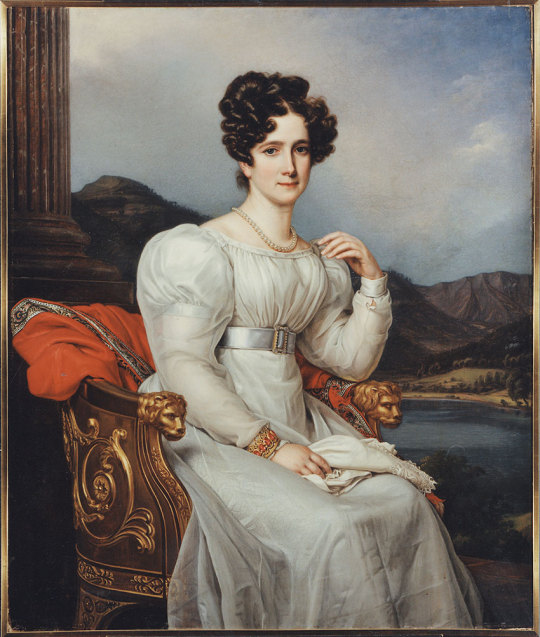
Fredrika of Baden by Joseph Karl Stieler (oil on canvas, 1826)
Fredrika Dorotea Vilhelmina of Baden was born on 12 March 1781 in Karlsruhe. King Gustav IV Adolf married her at Stockholm Palace Chapel on 31 October 1797.
The marriage was initially described as a happy one, but they divorced in 1812 – the first and only time a Swedish king and queen have divorced.
They broke up following the king's loss of Finland after the Finnish War in 1809. King Gustav IV Adolf was then arrested, deposed as king and expelled from Sweden.
Fredrika has given her name to the Norrland towns of Fredrika, Dorotea and Vilhelmina. This part of southern Swedish Lappland is unofficially known as Drottninglandet ('Queenland') in her honour.
Photo: Nationalmuseum
#swedish royal family#official portrait#queen fredrika#friederike von baden#frederica of baden#prinzessin friederike von baden#princess frederica of baden#house of zähringen#art history#swedish royalty#swedish history#royal history#my upload#fun fact: most of my ancestors are from those three towns so technically I can brag about my roots being queen-like
30 notes
·
View notes
Video
youtube
Amazing Historical Events That Occurred on 3/29🎉 #shorts #history
Welcome to a special edition of Amazing Historical Events That Occurred on March 29th! On this day, a variety of amazing events have taken place that have shaped the course of history. Let's take a look at some of the most incredible things that have happened on this date:1461: Duke Edward of York decisively defeated the Lancastrian army and proclaimed himself King Edward IV, deposing Henry VI and Margaret of Anjou. 1792: King Gustav III of Sweden tragically died after being shot in the back at a midnight masquerade ball. 1827: A crowd of over 20,000 mourners attended Ludwig von Beethoven's burial in Vienna. 1849: Great Britain formally annexed Punjab after their defeat of the Sikhs in India. 1929: President Hoover's installation of the first telephone in the Oval Office revolutionized how presidents interact and make decisions quickly. These amazing historical events that occurred on March 29th are all part of an incredible timeline of the world's history. From the death of a king to the birth of a new nation, this day has had its own unique impact on the course of history. We hope you enjoyed learning about these important moments and how they all tie together. Thank you for watching, and we'll see you next time! https://bit.ly/freebetwithCrypto https://splinterlands.com?ref=mortonmattd1 https://bit.ly/getonHive https://ecency.com/signup?referral=m0rt0nmattd https://www.risingstargame.com?referrer=m0rt0nmattd https://exode.io/?ref=790e9e1 https://bit.ly/WinCryptoWithMe https://bit.ly/FreeCryptoDrip https://bit.ly/FreeZECdrip
0 notes
Text
GUSTAV IV ADOLF
King of Sweden
(born 1778 - died 1837)

pictured above is a portrait of the King of Sweden, painted by Johann Baptist Lampi (the Elder) before 1830
-------------------- ~ -------------------- ~ --------------------
GUSTAV ADOLF was born in 1778, at Stockholm Palace in Sweden, during the reign of his father. He was the eldest son of Gustav III, King of Sweden, and Princess Sophie Magdalene of Denmark.
Check my post about his FATHER!
He was a member of the Swedish line of the HOUSE OF HOLSTEIN-GOTTORP. And, he was from birth the CROWN PRINCE OF SWEDEN.
His father suffered an assassination attempt in 1792, dying a few days later. So, he, at 14 years old, unexpectedly ascended as GUSTAV IV, KING OF SWEDEN, under the Regency of his uncle Karl, Duke of Södermaland.
Check my post on THE ASSASSINATION of his father!
At the end of 1796, he reached the majority at 16 years old, and the Regency of his uncle came to an end.
On the day before his 19th birthday in 1797, he married the 16-year-old PRINCESS DOROTHEA WILHELMINE OF BADEN. His new wife was one of the daughters of Karl Ludwig, Hereditary Prince of Baden, and Princess Amalie of Hesse-Darmstadt. With her, he had five children.
Check a list of his children at the end of this post!
In the early 1800s, Sweden joined the Third and Fourth Coalitions alongside other European countries against Napoleón I, Emperor of the French.
But, when Russia and Prussia made peace with France in 1807, through the Treaties of Tilsit, the Franco-Russian treaty proved to be particularly damaging with Russia invading Finland, a Swedish territory.
The loss of territories on the subsequent Finnish War led to his downfall, with a group of nobles orchestrating a coup to depose him in 1809.
By early March 1809, he was seized, and his family was imprisoned. While his uncle the Duke of Södermaland was put as the head of the new provisional government.
Trying to ensure that his son Crown Prince Gustav would succeed to the throne, by the end of March 1809, he voluntarily abdicated at the age of 30.
However, the Swedish Parliament, called Riksdag, did not accept his son as a successor and decided to remove all of his descendants and future lineage from the line of succession.
Then, by June 1809, the Riksdag formally elected his uncle as the new Monarch, who acceded as King Karl XIII, despite being 60 years old and having no living legitimate children. So, arrangements had to be made to adopt an heir.
The chosen heir was one of his Danish relatives, Prince Christian August of Schleswig-Holstein-Sonderburg-Augustenburg, who assumed the name of Crown Prince Karl August.
As the deposed King of Sweden, by the end of 1809 and already a 31-year-old, he was forced to leave in exile. He and his family settled in Baden, which was ruled by the grandfather of his wife Karl Friedrich, Grand Duke of Baden.
Though, by 1810, he decided to leave his wife and family and moved to the Swiss Confederation, where he used the style of COUNT GOTTORP.
Meanwhile, in Sweden, the chosen Crown Prince died, and another heir had to be found. Swedish officials then turned to Emperor Napoléon I and chose a French Marshall, Jean-Baptiste Bernadotte, Prince of Pontecorvo, who immediately took control of the government as Crown Prince Karl Johan.
While in Baden, in 1811, his brother-in-law succeeded as Karl, Grand Duke of Baden.
Probably before his 34th birthday in 1812, he officially divorced his wife. And, after the divorce, he began to use other styles such as DUKE OF HOLSTEIN-EUTIN and LORD/COUNT OF ITTER.
When his uncle died in 1818, the intended Crown Prince succeeded as King Karl XIV, founding the House of Bernadotte.
From 1818, he was a Basel citizen in the Swiss Confederation and had renounced all of his birth rights as COLONEL GUSTAF ADOLF GUSTAFSSON.
After his divorce, he had several mistresses and possibly many illegitimate children. But he only recognized one child that he had with a woman named MARIA SCHLEGEL, around 1820.
Not content with his life in Basel, by 1822, he renounced his citizenship, moving to St. Gallen around 1834.
The former King of Sweden died at St. Gallen in the Swiss Confederation, in 1837. He was 58 years old.
-------------------- ~ -------------------- ~ --------------------
Although in life he had never been allowed to return to Sweden, following the wedding of his great-granddaughter Princess Viktoria of Baden to Gustaf, Crown Prince of Sweden in 1881, the current Bernadotte Monarch, King Oscar II, had him reburied in Sweden.
And, through this wedding, the blood of the House of Holstein-Gottorp returned to the Swedish Royal Family in 1882 with the birth of his 2x-great-grandson Prince Gustaf Adolf, who in 1950 would succeed as Gustaf VI, King of Sweden.
Through them, he is an ancestor of Carl XVI Gustaf, the current Swedish Monarch.
-------------------- ~ -------------------- ~ --------------------
GUSTAV ADOLF and his wife FRIEDERIKE had five children.
Gustav, Prince of Vasa - husband of Princess Luise Amelie of Baden;
Princess Sofia of Sweden - wife of Leopold, Grand Duke of Baden;
Karl Gustav, Grand Duke of Finland - died at age two;
Princess Amalia of Sweden - unmarried; and
Princess Cecilia of Sweden - wife of August I, Grand Duke of Oldenburg.

pictured above is a portrait of the King of Sweden with his wife, painted by Jonas Forsslund circa 1797-1800
And, he also recognized one illegitimate children.
From his mistress MARIA:
Adolf Gustafsson - nothing is known about his life.
-------------------- ~ -------------------- ~ --------------------
SERIES - Descendants of the Monarchs of Ireland (DotMoI)
In a span of four generations, Gustav IV Adolf, King of Sweden, was related to the Monarchs of Ireland through the maternal family of his mother.
His great-grandfather was George II, King of Great Britain - the King of Ireland between 1727-60.
His grandmother was Princesss Louisa of Great Britain.
His mother was Princess Sophie Magdalene of Denmark.
#gustav adolf#gustav iv adolf#king gustav iv of sweden#king of sweden#house of holstein gottorp#holstein gottorp#swedish royals#swedish royal family#royals#royalty#monarchy#monarchies#royal history#swedish history#european history#world history#history#history lover#18th century#19th century#gustav iii#gustav iv#history with laura#DotMoI
1 note
·
View note
Text

What counts as an acceptable violence is a topic you can get like 100000 different opinions upon.
Lejeune tends to give the vibe he does not like looking at anything he's gotta kill in the eye, but given that he is like an engineering and artillery soldier, it's not like he is against violence in general.
But he claims he considered fighting Gustav IV and the royal bodyguards when a meeting between Gustav and Marshal Brune wasn't going well.
Because basically every Alternate History that isn't "what if the evil racists won?" is better (seriously man, why do people have such a boner for "what if the Nazis won?" and "what if the confederate south won?"), Alternate History where Lejeune fuckin' stabs Gustav and becomes King of Sweden because reasons™.

#louis francois lejeune#louis-francois lejeune#I feel like this is only amusing to myselg#but there are tons of people on the internet so maybe it will amuse someone else#marshal brune#King Lejeune AU#not enough brainpower to read more books right now#so deranged AUs it is
16 notes
·
View notes
Text










Royal Deaths, 25th September.
1066 - Harald III, King of Norway (1047-66).
1066 - Tostig Godwinson, Earl of Northumbria, brother of King Harold killed at the Battle of Stamford Bridge.
1086 - William VIII, Duke of Aquitaine.
1333 - Prince Morikuni, 9th shōgun of the Kamakura shogunate of Japan, dies at 32.
1506 - Philip I, the handsome, first Hapsburg King of Castile, dies of a fever at 28.
1615 - Lady Arabella Stuart, English great-great-granddaughter of King Henry VII and possible heir to the throne, dies imprisoned in the Tower of London at 39.
1617 - Emperor Go-Yozei of Japan.
1665 - Maria Anna of Austria, Electress of Bavaria.
1826 - Frederica of Baden, Queen of Sweden, former wife of King Gustav IV Adolf of Sweden.
1983 - Leopold III, King of the Belgians.
4 notes
·
View notes
Text
A palace in a movie
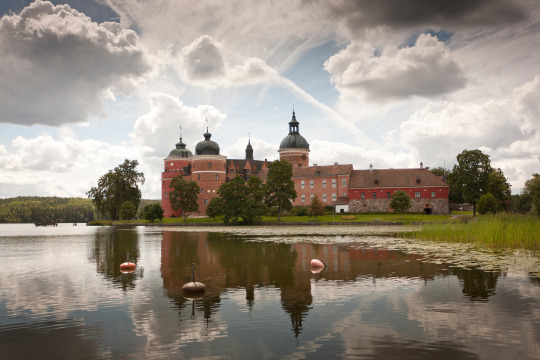
Gripsholm Castle (Gripsholms slott, in Swedish) originated as a fortress built during the 1370s by Bo Jonsson Grip, one of the highest officials of the Swedish court during the regency of Magnus IV, which explains the name it received and kept ever since.
Throughout the 15th century, the building changed hands between Queen Margrete I and another regent, Sten Sture, whose family eventually gave it over to become a charterhouse, which remained until the Swedish Lutheran Reformation, when in 1526 King Gustav I Vasa dissolved it and returned the castle to the heirs of Sten Sture's family.
Its location on the shores of Lake Mälaren, just over 50 kilometres from Stockholm, prompted King Erik XIV to reform it into a royal residence, but it also served as a place of seclusion for the king's brother, whose son Sigismund III eventually imprisoned his uncle.
In the 17th century it served as a residence for widowed queens, before becoming a prison in the next century, only to become a royal residence again, before King Gustav IV August was deposed and imprisoned in the castle in 1809. Gripsholms slott then became a museum, until the present day.
However, Gripsholm slott was the subject of another story, that of the German journalist Kurt Tucholsky, who used the pseudonym Kaspar Hauser, the name of a young man from the 19th century who gave life to one of director Werner Herzog's most celebrated films.
Tucholsky emigrated to Sweden in 1929, warning against the imminent rise of the National Socialists to power in Germany, and dedicated one of his works to Gripsholm Castle, a romantic summer love story with autobiographical reminiscences. It was made into a film twice, in 1963 and 2000.
Tucholsky's satirical, if rather political, works may have their climax in Gripsholm's famous stuffed lion, known to be the worst taxidermy in history. The lion, a gift from the bei of Algiers to King Fredrik I, arrived in Sweden in 1731 and is considered to be the first of its kind known in Scandinavia. When the feline died, no one had ever seen one and the taxidermist did what he could.
Photo: Mattias Lepapaniemi
12 notes
·
View notes
Text
Heir Apparent, Heir Presumptive, Crown Prince & Other Substantive Titles- a How-To On Royal Inheritance
Inheritance can be hard to understand, especially where titles are concerned, so I’ve decided to make a How-To Guide for the period rpc/writers on how the titles work.

**Please note this focuses on European Monarchies
Definitions:
Heir Apparent: an heir apparent is an heir that cannot be replaced in the line of succession. Historically, they were the eldest son of the Monarch (or whoever they were heir to). In modern day, many countries have changed their laws so that it is simply the eldest child.
Heir Presumptive: an heir that can be replaced- whether a sibling, cousin, or distant family member to the Monarch, an heir presumptive is the presumed heir unless the Monarch has a child (historically an eldest daughter would often be heir presumptive until a son was born, with many European countries switching to Absolute Primogeniture, any eldest child is heir apparent)
Crown Prince/Princess: A title used in many countries for the Heir Apparent of the Monarch. Some countries use other titles (Hereditary Prince, Prince of Wales, Prince of Asturias, etc).and in those instances Crown Prince will be rarely or even never used.
Substantive Title: A title held by nobility or royalty, not a courtesy title. Titles used by heirs to Monarchs (other than crown prince) are substantive titles. In Europe Belgium, The Netherlands, and The United Kingdom have substantive titles reserved for the Heir Apparent. Monaco and Spain have substantive titles that heir presumptive can use.
FAQ:
what is the difference between heir apparent and heir presumptive? an heir apparent will be the next holder of the title (unless they die before the holder of the title), where as an heir presumptive will not always inherit the title. an heir presumptive can be replaced in the line of succession by an heir apparent
has an heir apparent ever lost their position? yes. in 1979 prince carl philip was born, and as a son he was was ahead of his sister victoria in line to the throne, and as heir apparent he was crown prince, as the country had male preference primogeniture. however in 1980 sweden adopted absolute primogeniture, and victoria became crown princess and first in line to the throne. other times heirs apparent have lost their position include james stuart (son of james ii &vii) due to being raised as catholic, crown prince gustav (son of gustav iv) due to his father being disposed,
how can an heir apparent lose their position? like in cases above, if a monarch is overthrown their heirs can also be removed from succession. some countries have stipulations- for example the british heir to the throne would lose their position is they converted to catholicism (and pre-2011 marrying a catholic would also cause them to lose their position), in many countries marrying without the permission of the monarch or parliament could also cause someone to lose their position.
which countries use crown prince as a title? bahrain, brunei, denmark, jordan, kuwait, lesotho, morocco, norway, oman, saudi arabia, sweden, and tonga
what about countries who don’t have a king, but a grand duke or prince? often hereditary prince will be used as a title. crown prince is usually reserved for the heirs of kings. in luxembourg the heir to the grand duke is the hereditary grand duke, and in monaco the heir to the prince is the hereditary prince (the title marquis of baux may be conferred onto the heir apparent or an heir presumptive)
what does it mean to have a titled conferred? the sovereign has to give the title- while a crown prince is born (or automatically inherits) with the title, some substantive titles must be conferred. in britain (and historically england), the heir apparent is conferred the title prince of wales (they automatically hold the title duke of cornwall & duke of rothesy, among others). in monaco the heir (open to both heir apparent and heir presumptive) can be conferred the title marquis of baux or duke of valentinois.
what countries use substantive titles? modern countries: belgium (duke of brabant), monaco (marquis of baux/duke of valentinois), netherlands (prince of orange), spain (prince of asturias), the united kingdom (prince of wales, duke of cornwall, duke of rothesy). historical countries: above, but also france (dauphin), portugal (duke of braganza), england (prince of wales, duke of cornwall), tuscany (grand prince), scotland (duke of rothesy), russia (tsarevich), italy (prince of piedmont, prince of naples), bohemia (margrave of moravia), bulgaria (prince of turnovo), portugual (prince of brazil)
has an heir presumptive ever became monarch? yes. elizabeth ii was heir presumptive (as she was the eldest daughter of a king) as at the time of her succession the uk had male preference primogeniture- if at any point her father had a son, elizabeth would have been displaced. this goes for all monarchs who were women in a kingdom with male preference primogeniture. as well, any time a sibling or cousin came to the throne via the line of succession, they were heir presumptive as their place in the succession would have changed had the monarch had a child.
is an heir presumptive called a crown prince? no, crown princes are heirs apparent.
what is a crown princess? a crown princess is either an heiress apparent, or the wife of a crown prince. Until the 20th century, all crown princesses were wives of crown princes, as male preference primogeniture or salic law was in place.
what is salic law? agnatic primogeniture. bares women from inheritance, all inheritance is via the male line only. france is known for it’s salic law. quasi-salic law allows men from a female line to inherit (ie, the king’s daughter’s son might inherit if the king has no sons).
do heirs presumptive get substantive titles? in spain an heir presumptive may use the title prince of asturias and in monaco a sovereign prince may confer the marquis of baux upon an heir presumptive. in other situations a sovereign or monarch could bestow a title upon an heir presumptive but it is not automatic, and they would usually not be the titles reserved for heirs apparent.
what is absolute primogeniture? absolute primogeniture allows the oldest child of a monarch to inherit, regardless of gender.
what about illegitimate children? illegitimate children are not in the line of succession. some may be given substantive titles and recognized by their royal parent, but they are not eligible to be heir. in some countries, illegitimate children can be styled as royal highness and have the title of prince(ss) but not be in the succession (for example, princess delphine of belgium). some countries will allow a child to be legitimized if the parents marry, and at that point the child is placed in the line of succession- but some countries will not retroactively legitimize a child through a parent’s marriage. in france, a llégitimée de france was a bastard of the king’s that was declared legitimate, and thus had a place at court above the nobility- but not in succession.
70 notes
·
View notes